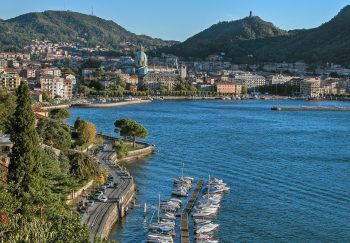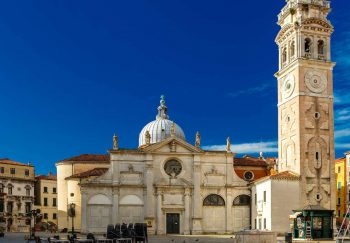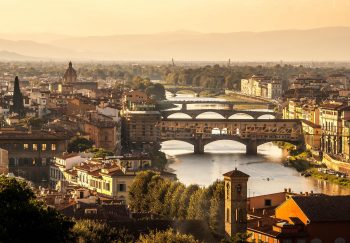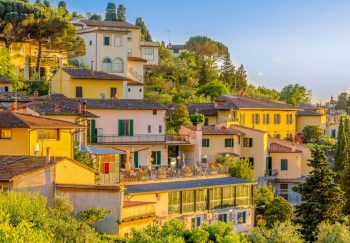Jack Kerouac wrote in his book “Tristessa”, a novella about love and life in Mexico City that the protagonist spoke with a great melancholic voice, much like Luise Rainer or sad-faced Viennese actors who made everyone in Ukraine weep in 1910.
I was in Ukraine at the time. To see if my girlfriend knew the meaning of the quote, I sent it to her. I did a lot of research but to no avail. One comment she made to me struck a chord with me, and it sparked a long-standing obsession.
“Well, at that time, Western Ukraine was part Austria-Hungary.”
Austria-Hungary
This detail was something I didn’t know. From an early age, I knew that Central and Eastern Europe was once home to a multiethnic empire.
This region was also known as Austria-Hungary or the Austro-Hungarian Empire. It spanned the entire continent. Hungarian and German were the most common languages, but they weren’t the only ones.
Czech, Polish and Slovakian were all possible to hear in far-flung parts of the Empire. After the war they wanted to start, 1918 saw Austria-Hungary cease to exist.
New states were created in its place: Romania, Czechoslovakia, and Poland, as well as smaller Austria and Hungary. 100 years doesn’t seem like a very long time in the grand scheme of things.
Traveling in the Former Austro-Hungarian Empire
Would I find any physical or mental remembrances of those times if I walked through the lands of former Austria-Hungary, also known as the Dual Monarchy?
I was also interested to see if there were any similarities between these countries. I set off from Trieste, an Adriatic port, to travel westward to reach Lviv in Western Ukraine.
Grand Canal in Trieste (Italy)
Trieste, Italy
My bus started its descent down a network spiraling, cliff-side roads high over the Adriatic. Large cranes lifted cargo from ships in the Empire’s largest port.
The churches’ bell towers rose high above the city and looked out onto the Cypress-lined streets, a sight that was reminiscent of Rome’s Empire. Trieste, despite being in mid-spring, didn’t feel very Italian despite the cold weather.
Its history is heavily influenced by Latin, Germanic and Slavic cultures due to its geographical location. It felt a bit Austrian to me. It is grand, but not too imposing. Imperial, but also the coast.
It may have been its Italian heritage that gave it its sophisticated edge. Piazzas were large squares that had the Viennese look.
Trieste was the symbol of the multicultural Empire it found itself in. I stood on the harbor wall, staring out at the sea as I walked. My eyes were focused west, but my thoughts were moving east.
Istrian Peninsula
The Istrian Peninsula, which is largely in Croatia now, shares a similar trait with Trieste in that it doesn’t feel or look particularly Croatian. There were clues to Rome, but I was looking for clues to Vienna. To my delight, small reminders started appearing in unexpected ways.
The wall of an atelier at Rovinj featured the Empress Maria Theresa picture. The Rijeka outskirts were dressed in unmistakably imperial Hungary’s yellow hues.
The former military barracks that were built in Pula by the Austrians now house a cultural center and theater. Slowly, but surely, I began to see fragments of Hapsburg’s life and was captivated by the iconic Austro-Hungarian aesthetic.
Budapest, Hungary
After a couple of nights in Zagreb, which was windy and wet, I went on to meet my girlfriend for a weekend in Budapest, Hungary . You can find the small reminders that I found in Rijeka on every street corner.
As I looked across the Danube to Pest, I saw what was certain to be an inspiration for Wes Anderson’s colorful and symmetrical masterpiece “The Grand Budapest Hotel.”
The Hotel Gellert, which stands tall and strong over the Danube banks on the ancient Buda bank, radiates a grandiose and sophisticated glow. In the evenings, I would walk along the riverbank, allowing the spirit of history to guide my way through this architectural paradise.
The Austro-Hungarian Compromise of 1867
The Austro-Hungarian Compromise in 1867 saw the Kingdom Of Hungary regain control of previously Hungarian-ruled lands and become a dual monarchy.
Franz Josef was crowned Emperor but became King of Hungary. This compromise was made to quell the rise of nationalism that had gripped Europe since 1848.
Transylvania, which is now part of Romania, was ruled by Budapest. It also ruled parts of Slovakia, Ukraine and other lands that had small Hungarian populations. Northern Serbia was another region that fell under Hungarian control.
Serbia
Before the annexation by Bosnia and Herzegovina, Deliblato was one of, or the most, southern points of the Empire. The Ottoman Empire invaded the Serbian lands from all directions for centuries.
They brought their culture, religion, and customs with them to Bosnia, Albania, and Macedonia. But their lasting legacy in Serbia was coffee. We spent our mornings in the courtyard sipping Turkish coffee.
It became a daily routine during our time there. Boris, our host would tell us about the Ottoman era and more recently Yugoslavia during these morning ceremonies.
I knew that we had crossed the Austro-Hungarian Empire’s boundary, so I asked Boris if there were any clues. A stone’s throw from the farmhouse was a lush, green forest that would not look out of place here in Tyrol. This spot was once home to Europe’s largest sand dunes.
Austrians recognized the potential of the land, and wanted to stop the moving sands. So seeds from Tyrol were brought to Serbia, and today, more than 100 year later, it is the largest forest Northern Serbia has ever seen.
Hiking through the Slovakian Heartland, Tatra Mountains
Both time and money were running out. I needed cheap accommodation to stay for a few weeks before my final moves towards Ukraine. I was able to find a hostel in Budapest where I could volunteer, so that’s two birds with one stone. I took advantage of the break and got some much-needed rest.
Slovakia
Next, I took a bus from Budapest to Zvolen in Slovakia. From there, I would hitchhike across the Slovakian heartland to Krakow. I would then take a train from Lviv to complete my Austro-Hungarian trip.
After a long walk, I was quickly picked up by my driver. My backpack was also heavy and the day was bright. The wait was longer than usual as I waited for two hours at the river bank outside Banska Bystrica.
I thought about the possibility of being left behind, until an elderly, hairy-chested and sweaty man came up to me. I thanked the authorities, jumped in, and shook hands with him, both of us smiling. He set forth for Ruzomberok at a blistering pace.
Stepan was not a talker. I spoke to Stepan in a slight impression of German, and I told him my plans for returning to Ukraine. He smiled enthusiastically.
He said “Sehr gut!” often. After a long silence, he asked me if I would like to visit a picturesque village on a mountain. We made our way up a hill to a clearing and I accepted. We stopped and started walking uphill.
After buying me a shot at honey liquor from a stall, he took me to a museum that displayed traditional Slovakian dwellings before taking me to a bar. As we walked back to our car, the German chatter started to flow. He gave me another shot, this one homemade plum schnapps.
Poland
As a rainstorm approached, he offered to let me stay at his house. As I was racing against the clock to get to Krakow, I declined his offer. He was kind enough to understand, and I was seated in the front seat, stricken by his kindness.
A couple of Polish truckers helped me arrive in Krakow that morning. I then headed straight to Massolit, my favorite bookstore in Europe. I felt tired from the long hauls of the previous month.
My body was exhausted. My mind was energized and replenished. My world was filled with architectural delight, revolutionary art, high culture and vast landscapes. I had seen movies and photos, and it was a world I never knew existed.
While the landscapes may be altered, their history is not. These lands could be walked for my entire life, and although small reminders are available here and there, it was a world that had reached its zenith.
Ukraine
The last glimpses of the Austro-Hungarian Empire’s past in Lviv were a great way to end the day. There was still one train to catch, as home was in Kyiv. The city was lit by the last remnants of the sun, casting a nostalgic light that allowed us to see the past and the unknown future.












